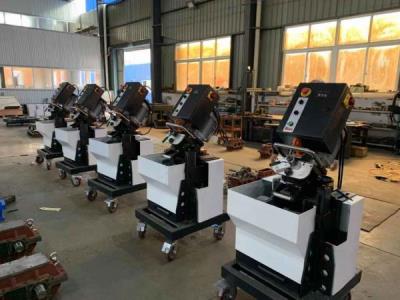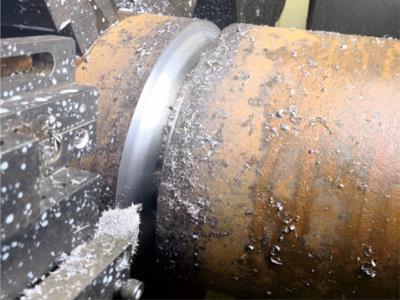Pipe welding process technology
Time:2019-11-28Browse:49
1、 Preparation before welding:
(A): The location of the pipe's welded joints should be convenient for welding and heat treatment, and should avoid the stress concentration area, and generally should meet the following requirements:
1. The welding surface of the heating surface pipe, the center line of which is at least 70mm from the outer wall of the pipe and the edge of the support hanger, the distance between the two butt welds should not be less than 150mm;
2. Butt joints of pipelines, the center line of which is not less than the outer diameter of the pipe, and is greater than 100mm, and greater than 50mm from the edge of the bracket; the centerline of the pipe is not less than the wall thickness plus 15mm, and not more than 25mm and Not more than 50mm;
3.Pipe joints and instrument sockets should not be installed in welds or heat-affected zones.
4. With longitudinal welds, the distance between two adjacent longitudinal welds should be greater than 3 times the wall thickness and greater than 100mm;
5. The hole of the welded pipe should be avoided in the weld as much as possible, and the overlap between the controlled weld and the heat affected zone of the adjacent weld should be avoided.
Holes can be made in or near the weld when the following three conditions are met:
a: 60mm welds on both sides of the pipe hole (counting from the hole edge) need to pass the radiographic inspection.
b: The edge of the hole is not on the weld defect.
c: The overlap size of the overlap weld shall be not less than 5 times the thickness of the base metal and greater than 30 mm
(2) The grooves of boilers, pipelines, low-pressure vessels and load-bearing structures shall be processed in accordance with the design drawings. If there are no regulations, the form and size of the grooves shall meet the welding quality and the amount of filler metal shall be small to facilitate operation and improve labor. Conditions, reduce welding stress and deformation to adapt to the requirements of flaw detection and other principles to choose.
2、 Butt welding of pipes:
The following are selected by the welder, welding method, electrode selection and counterpart size.
1. Requirements of the welder:
According to the "Boiler and Pressure Vessel Welder Examination Rules", according to the type of material to be welded, welding position and pipe diameter, according to the welding project issued by the Welder Certificate issued by the Bureau of Quality and Technical Supervision. Welders shall have good workmanship and familiarity with operating instructions. Welders who do not have certificates or project inconsistencies shall not be allowed to perform welding.
2. Welding method selection:
Should be based on the site conditions, according to the welding material and the size of the pipe diameter, when the wall thickness is less than or equal to 6mm, argon arc welding or arc welding underlaying welding surface technology should be selected;
When the wall thickness is> 6mm, argon arc welding is used as the base, and the welding process of manual arc welding of the cover surface;
3.Type and selection of electrode:
3.1 Ensure that the metal properties and chemical composition of the weld are the same as the base metal;
3.2 For welding of carbon steel and ordinary low-alloy steel, an electrode with matching strength and good crack resistance can be selected;
3.3 Welding of dissimilar common alloy steel shall be selected according to the steel grade with lower strength.
4. Counterpart requirements:
Pipe grooves are generally V-shaped, with 30 degrees to 35 degrees on one side, and blunt edges and gaps must be provided on the opposite sides. The function of the groove is to allow the heat source (arc and flame) to reach the root of the weld, to ensure that the root of the weld is easy to penetrate, reduce the welding heat specification, reduce the heat affected zone and deformation, and the role of the blunt edge and gap is to ensure the weld Easy to weld through to avoid defects such as burn-through and welding slip.
Tube counterpart size:
When the pipes (pieces) with the same wall thickness are aligned, the inner wall should be flush. If there is a gap, the gap value should be designed according to the design requirements. When there is no design requirement, the following requirements should be implemented:
a: Partial gaps in highly toxic and flammable and explosive pipelines are 10% of the wall thickness and not more than 0.5mm;
b: The local gap of high temperature and high pressure and alloy steel pipelines is 10% of the wall thickness, and is not greater than 1.0mm
c: The local stagger of other pipes is 10% of the wall thickness, and not more than 1.5mm.
Special counterpart clamps should be used for the counterparts, and they should be fixed firmly.





